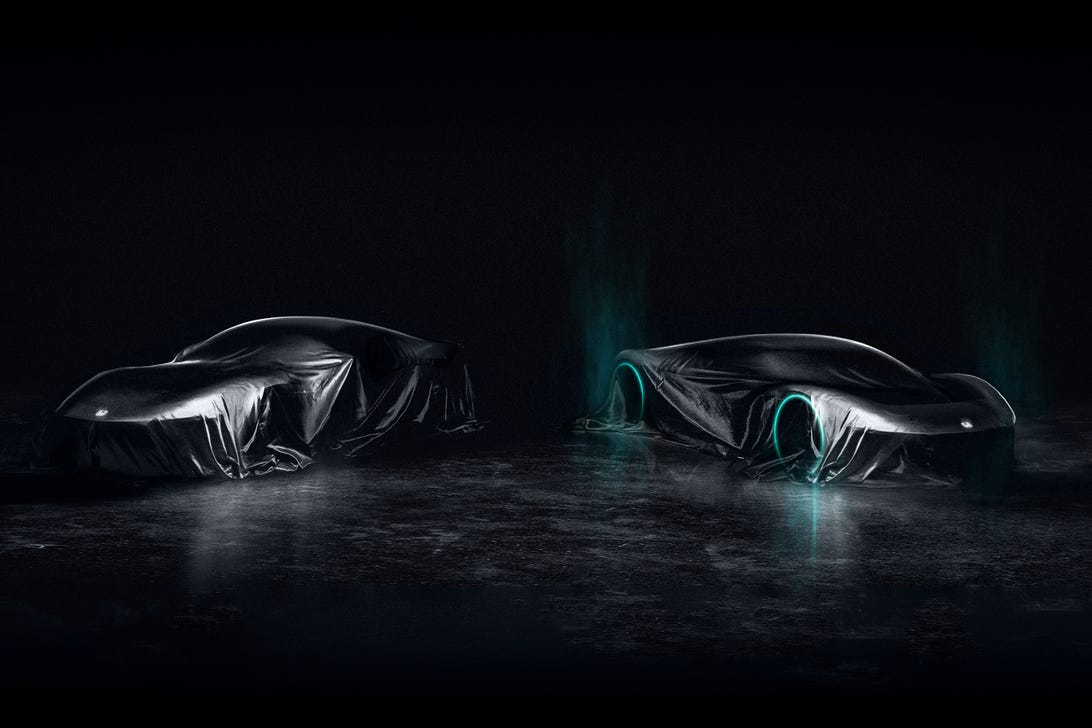Japanese automaker Honda has detailed its plan to further the electrification of its global lineup of vehicles over the next 10 years in a briefing streamed today. Plans include a massive investment in EV technology, 30 new electric cars launching globally by 2030 and, here in the US, two new dedicated electric SUVs for its Honda and Acura brands. If that wasn’t enough, we were teased with the announcement that two new electrified sports cars are also in development.

Honda wrapped up its electrification road map with the announcement of two new sports car models in development.
HondaOver the next 10 years, Honda will invest around 5 trillion yen (approximately $40 billion) in the development of electrification and related software technologies — the lion’s share of the automaker’s total 8 trillion yen ($64 billion) R&D budget for the same period.
Starting with energy storage, Honda has previously announced a partnership with GM to procure Ultium lithium-ion batteries for use in its vehicles. Honda is also exploring other partnerships separate from GM and exploring the possibility of creating a new joint venture company for battery production. And beyond lithium-ion tech, Honda will also invest around 43 billion yen ($343 million) in the development and production of solid-state batteries, with early proof-of-concept production planned to come online in spring 2024.
In North America, Honda will launch two new electric SUVs by 2024: the new Honda Prologue and an Acura-branded model.
HondaWith batteries sorted, Honda is planning 30 new EV models launching globally by 2030, building to a goal of building and delivering 2 million EVs annually when all is said and done. In North America, we can expect to see the first fruits of that labor as early as 2024, when Honda plans to launch two new “mid- to large-size EV models” developed jointly with GM. This includes an all-new Honda Prologue SUV and an as-yet-unnamed Acura electric SUV model.
In its homeland of Japan, Honda will launch a 1 million yen ($8,000) commercial mini EV, leading the way for a range of personal-use mini-EVs and e-SUVs. Meanwhile, 10 new EV models will roll out in China by 2027. Back in the States, the automaker also plans to begin rolling out a range of more affordable EVs in alliance with GM after 2027, with “a cost and range that will be as competitive as [those of] gasoline-powered vehicles.”
The future flagship sport model’s proportions hint at a new-generation of Honda’s mid-engined NSX.
HondaBefore dropping the cherry on top of this smorgasbord of announcements, Honda drew attention to its previously announced joint venture to develop EVs with Sony, reiterating its plans to “launch software-defined highly value-added EVs” by 2025. Honda representatives clarified that this will be a separate lineup from the aforementioned Honda products, but that lessons learned from Sony in the areas of advanced software and entertainment may find their way into future Honda products.
Finally, Honda President Toshihiro Mibe took the stage to announce that the automaker is “thinking about the launch of two sport models.” Honda is developing a specialty model and a flagship model that will be introduced globally and will “embody Honda’s universal sports mindset and distinctive characteristics.”
Is this the next S2000, a reimagined Prelude or something completely new?
HondaPresented as silk-cloaked renderings, the mid-engine proportions of one of the models seem to hint at a rebirth of Honda’s NSX — an already electrified supercoupe that lives under the Acura brand here in the States and that just exited production with a final run of Type S models. The other’s front-engined proportions raise more questions: Most likely this would be the return of Honda’s S2000, but could it also be a reimagining of the Prelude or something completely new with rear- or even all-wheel drive? We’ll have to wait and see what Honda is cooking up for the future.
